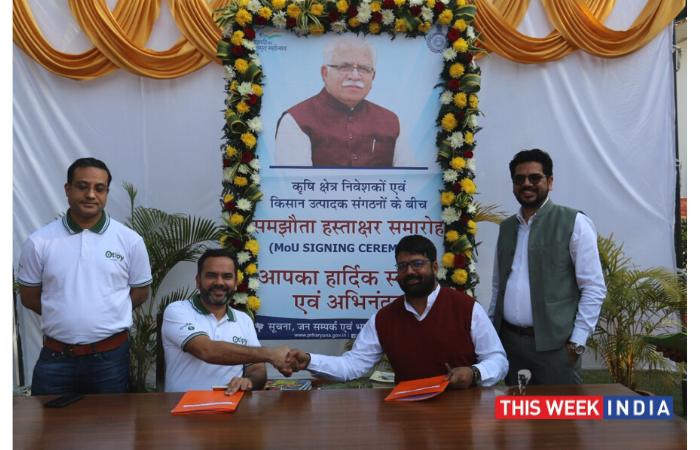New Delhi, 10th December 2021: Otipy, India’s fastest growing community group buying startup for fresh fruits and vegetables, today announced partnership with Haryana govt to procure 10,000 tonnes of fresh produce in 2022, from Farmer Producer Organisations (FPOs).
Varun Khurana, Founder and CEO, says “At Otipy, we move 80-100 tonnes of produce everyday from farms to consumers in NCR, and Haryana is a major procurement zone. We have signed an MoU with Haryana Government promoted FPOs and will be procuring at least 10,000 tonnes from 600+ FPOs (farmer producer organisations) in Haryana in 2022. This will also help increase farmer’s incomes which is in line with the Government’s strategic initiatives.”
Deepak Tewari, VP – Sourcing for Otipy said “We have been working with several FPOs in Haryana across various farm clusters and have had a great symbiotic relationship. Haryana is a major sourcing belt due to its proximity to NCR, that helps us serve fresh harvested produce to consumers. We plan to further build on these relationships.”
Otipy’s digital system ensures that farmers have complete transparency in terms of Price, Quantity and Quality. Additionally, Otipy ensures that price realisation to farmers is higher when compared with the traditional Mandi system. Otipy directly works with farmers and helps them in planning better crop cycles to realize more value from the market.
Naveen Antil, Director Khewra FPO Sonepat, said “We have been working with Otipy since last 2 years, Otipy was our first customer since inception. We have also been part of the growth journey of Otipy and farmers in our FPO have been immensely benefited from the transparent practices of Otipy in the last two years“.
Otipy provides service to more than 4 Lakh consumers in Delhi NCR leveraging its 20,000+ community leader network. Otipy procures its produce from more than 10,000 farmers across Haryana, Uttar Pradesh, Delhi, Gujarat, Himachal Pradesh, Karnataka, Rajasthan, and Maharashtra. Leveraging its unique prediction-based model, Otipy has been able to decrease food wastage in the supply chain from 40% down to just 3%.









